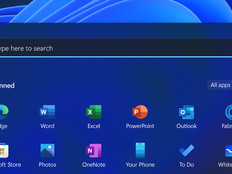Making a Safe Return to Campus Possible
The OSU IT department is a prime example of how IT leaders have become a vital part of the solution for higher education’s most pressing concern: campus health and safety.
Their team recently developed an application that assists with COVID-19 screening and contact tracing on campus. Taking advantage of pre-existing infrastructure, they used Microsoft’s Power Apps, SharePoint, Office 365, Power BI, and Power Automate to create the app.
The team notes that the Power Apps were a particularly effective technology of choice because the data that Power BI’s dashboard generates can notify universities and colleges of an outbreak as soon as one occurs.
“Our mission was to make the solution easy to use, and seamless in everyday production. After all, the business needs drive the technology, and we strive to meet those needs,” says Charles Siebert, a systems engineer at OSU. “During these uncertain times, Power Apps allows us to deliver certainty with a low-code, agile solution to get a product in the hands of our users as quickly as possible.”
OSU’s screening app consists of daily self-assessments in which students, faculty and staff complete a comprehensive questionnaire that asks if they experienced any COVID-19 symptoms in the past 24 hours. Anyone can fill out the questionnaire from their phones or computers.
Power Apps also allowed the developers to streamline the app’s processes. After submitting the survey, people will receive an instant automated email with a QR code that confirms whether they can report to campus for additional screening. As they arrive on campus, they show the QR code linked with their survey results to gain access to facilities. An administrator can also easily scan the QR code with an iPhone camera.












